Warren Distinguished Lecture Series

The Warren Distinguished Lecture Series is made possible by a generous, renewing gift by Alice Warren Gaarden in 1961. Since 1989, we have been bringing in accomplished researchers and speakers from around the world to share their work with students, faculty, and friends of CEGE. Please join us for these lectures!
- Join us in person in the George J. Schroepfer Conference Theater, 210 Civil Engineering Building, Fridays at 10:10 a.m., unless otherwise noted. Coffee and refreshments served.
- Join us via Zoom. Registration is required. Link information will be sent when you register.
- Recordings are available on the CEGE YouTube channel, Warren Lecture Series playlist , where you can also search past lectures.
Upcoming Events
We wrap up the spring season on April 26 with the Robert Dexter Lecture with Dimitrios Lignos, Resilient Steel Structures Laboratory, École Polytechnique Fédérale de Lausanne (EPFL), Lausanne (Switzerland). The series will resume after a summer break.
There are no upcoming events matching your criteria.
Past Warren Lectures
Electrochemistry and Membrane-Based Water Treatment: Synergies and Challenges
Friday, Jan. 26, 2018, 10:10 a.m. through Friday, Jan. 26, 2018, 11:15 a.m.
George J. Schroepfer Conference Theater, 210 Civil Engineering Building
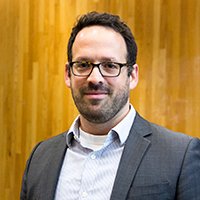
David Jassby
Civil and Environmental Engineering, UCLA
ABSTRACT: The treatment and recovery of water from highly contaminated sources remains a serious challenge. Existing treatment technologies can produce the desired water quality, but the costs in terms of energy, chemicals, and physical footprint are often unacceptably high. Electro-active polymeric membranes offer significant advantages over traditional membrane materials. The goal of Jassby’s research program is developing innovative electrically conducting polymeric membrane materials and characterizing their electronic and transport properties. Jassby is also interested in scalable manufacturing methods and treatment processes that utilize the unique properties of these membranes. This talk covers two ongoing research projects: the fabrication and characterization of carbon nanotube-based polymeric membrane materials, and harnessing electrochemical reactions for enhanced water treatment processes.
Birth of the Steel Skyscraper
Friday, Dec. 8, 2017, 10:10 a.m. through Friday, Dec. 8, 2017, 11:15 a.m.
George J. Schroepfer Conference Theater, 210 Civil Engineering Building
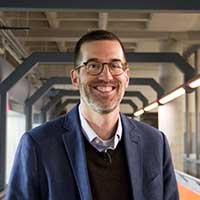
Ben Schafer
Civil Engineering, Johns Hopkins University
ABSTRACT: Shafer will present the history and context that led to the birth of the steel “skeletal” skyscraper in late 19th century Chicago. The tenets of Structural Art will be introduced and mapped against the skyscraper and its evolution. The conditions that give rise to innovation in structures, the engineering role in skyscraper innovation, and the solutions that rise to the highest level of engineering success will all be explored. The lesser known role of the engineer John Wellborn Root in the First Chicago School will be highlighted in the lecture. Using these early structures for context, comments on more recent steel skyscrapers are briefly explored.
New Frontiers for Wave Manipulation Using Metamaterials
Friday, Dec. 1, 2017, 10:10 a.m. through Friday, Dec. 1, 2017, 11:15 a.m.
George J. Schroepfer Conference Theater, 210 Civil Engineering Building
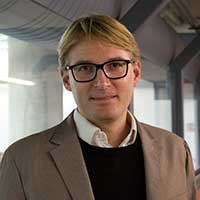
Andrea Alù
Electrical and Computer Engineering, University of Texas at Austin
ABSTRACT: Metamaterials are artificial materials with properties well beyond what was offered by nature. Metamaterials provide unprecedented opportunities to tailor and enhance the interaction between waves and materials. Alù discusses his recent research activity in electromagnetics, nano-optics and acoustics, showing how suitably tailored meta-atoms and arrangements of them open exciting venues to manipulate and control waves in unprecedented ways. He discusses his recent theoretical and experimental results, including metamaterials for scattering suppression, metasurfaces to control wave propagation and radiation, large nonreciprocity without magnetic bias, giant nonlinearities in properly tailored metamaterials and metasurfaces, and active metamaterials. Physical insights into these exotic phenomena, new devices based on these concepts, and their impact on technology are also discussed.
Perspectives on Urbanization, Water and Food Security, and Contaminants of Emerging Concern
Friday, Nov. 17, 2017, 10:10 a.m. through Friday, Nov. 17, 2017, 11:15 a.m.
George J. Schroepfer Conference Theater, 210 Civil Engineering Building

Bryan Brooks
Environmental Science, Baylor University
ABSTRACT: Historically, human populations have thrived near rivers and coastlines. Now the footprint of a metropolitan area can extend throughout a watershed and encompass smaller-order tributaries. Population densities dictate the need for new water supplies and reclamation infrastructure. Increasingly, effluent-dominated and dependent instream flows are becoming critical arteries for beneficial water reuse. Access to, consumption of, and concentration of chemicals is occurring rapidly, faster than the implementation of treatment technology in developing countries. For example, globally, 80% of sewage production is returned to the environment untreated. In developing nations, waters of diverse quality are being recycled for aquaculture, yet chemical residues are differentially studied. In this presentation, Bryan Brooks briefly reviews scientific lessons learned from his studies of down-the-drain chemicals, including ionizable contaminants. Though many questions remain, studies of contaminants of emerging concern continue to develop more sustainable environmental assessment and management of urban inland and coastal systems.
Life in Moving Fluids
Friday, Nov. 10, 2017, 10:10 a.m. through Friday, Nov. 10, 2017, 11:15 a.m.
George J. Schroepfer Conference Theater, 210 Civil Engineering Building

Miki Hondzo
Civil, Environmental, and Geo- Engineering, University of Minnesota
ABSTRACT: Miki Hondzo studies ecological fluid mechanics, the interactions between moving fluids and the physiology, metabolism, and behavior of living organisms in water environments. Hondzo presents a sample of the lab and field measurements from his group’s research at UMN’s St. Anthony Falls Laboratory. In this presentation, he focuses on depicting interactions between moving fluids and freshwater aquatic organisms, including various types of algae, cyanobacteria, and macro-invertebrates. Hondzo also depicts global environmental issues relevant to water quality and to algae-produced renewable energy in the light of ecological fluid mechanics.
Space-Based Precipitation Radar Systems for Water Resources and Hydrology
Friday, Nov. 3, 2017, 10:10 a.m. through Friday, Nov. 3, 2017, 11:15 a.m.
George J. Schroepfer Conference Theater, 210 Civil Engineering Building
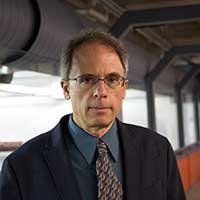
Joe Turk
Jet Propulsion Laboratory, Caltech
ABSTRACT: Joe Turk provides a brief background on the Tropical Rainfall Measuring Mission (TRMM), which operated from 1997-2014, and the Global Precipitation Measurement (GPM) spacecraft, which launched in 2014. He then describes the science underlying the interpretation of the observations, methods to accommodate the variable surface conditions, and various findings from the first three years of the GPM core mission. Lastly, Turk discusses several concepts proposed for future space-based radar systems related to improved understanding of extreme precipitation and cloud-precipitation processes.
(Presentation not available).
How Membrane Technology Contributes to Sustainability and Life Sciences
Friday, Oct. 27, 2017, 10:10 a.m. through Friday, Oct. 27, 2017, 11:15 a.m.
George J. Schroepfer Conference Theater, 210 Civil Engineering Building

Abhishek Roy
Dow Water and Energy Solutions, The Dow Chemical Co.
ABSTRACT: Since the inception of FT30-interfacial polyamide chemistry by John Cadotte, there has been significant interest in improving energy and separation efficiency for reverse osmosis operations from a membrane chemistry standpoint. However, development of structure-property relationships has been a challenge owing to the complex, crosslinked, nanoscale morphological structure of polyamides. In the last few years, Dow has achieved a fundamental structure-property relationship of polyamide RO membrane. A breakthrough in membrane chemistry innovation came from in-depth characterization of polymer composition, morphology, topology, and post-gel properties coupled with fundamental transport and structural modeling. Roy provides insight to Dow’s next game changing membrane chemistry innovation and its potential impact in reducing the cost of water, addressing energy, and providing potable water across the globe. Membranes also offer economic and technical advantages in addressing unmet separation needs for several bio-based applications. Roy addresses applications of nano filtration membranes in bio processing, food, diary, and pharmaceuticals industries, and he highlights upcoming technical challenges and opportunities.
Localized Shear and Compaction in Porous Sandstone
Friday, Oct. 13, 2017, 10:10 a.m. through Friday, Oct. 13, 2017, 11:15 a.m.
George J. Schroepfer Conference Theater, 210 Civil Engineering Building

John Rudnicki
Civil and Environmental Engineering, Northwestern University
ABSTRACT: In porous rock (15–25% porosity) shear localization is accompanied by compaction. In limiting cases, bands with minimal shear offset (compaction bands) can form perpendicular to the most compressive principal stress. Because reduction in porosity reduces permeability, localized compaction can affect processes involving fluid injection or withdrawal from reservoirs, such as energy recovery, waste disposal, or sequestration of CO2. Rudnicki reviews laboratory and field observations of localized compaction and presents simple models for their onset and propagation.
Stiffness-Based Compaction Quality Assurance Testing Using Lightweight Deflectometers
Friday, Oct. 6, 2017, 10:10 a.m. through Friday, Oct. 6, 2017, 11:15 a.m.
George J. Schroepfer Conference Theater, 210 Civil Engineering Building

Charles W. Schwartz
Civil and Environmental Engineering, University of Maryland - College Park
ABSTRACT: Elastic modulus is the fundamental material input required for the structural design of pavements. The Lightweight Deflectometer (LWD) is a portable device that can be used to measure the surface modulus of unbound layers directly in the field. Compaction control using lightweight deflectometers (LWD) is currently being evaluated in several states and countries and fully implemented for pavement construction quality assurance (QA) by a few. The methodology described by Schwartz provides a straightforward procedure for using LWDs for modulus-based compaction QA. This procedure is summarized in two modulus-based QA procedures/specifications suitable for practical implementation by field inspection personnel.
Current Challenges in Modeling Solidification Processes
Friday, Sept. 29, 2017, 10:10 a.m. through Friday, Sept. 29, 2017, 11:15 a.m.
George J. Schroepfer Conference Theater, 210 Civil Engineering Building
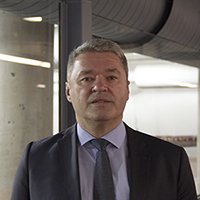
Igor Vušanovic
Mechanical Engineering, University of Montenegro
ABSTRACT: Modeling solidification phenomena, processes, and operations is challenging due to the vast range of length scales, from sub-micron crystal morphology to meter sized equipment. Typical modeling scenarios involve a numerical solution of coupled heat, mass, and solute transport on both macro and micro scales, supported by appropriate constitutive closure relationships. Some simple solidification models can be robust in practice and give reasonable, acceptable results. Increasing the level of complexity of these models does not necessarily lead to a higher level of precision or insight. Often the numerical ‘noise’ in such calculations masks the predicted physically realistic behaviors. Vušanović presents an overview of various levels of solidification models, his experience with the models, and some of the obtained results. He also presents some very early experience with models that allow for solid movement—adopting approaches that have been previously used in modeling flow on porous media and sediment transport.